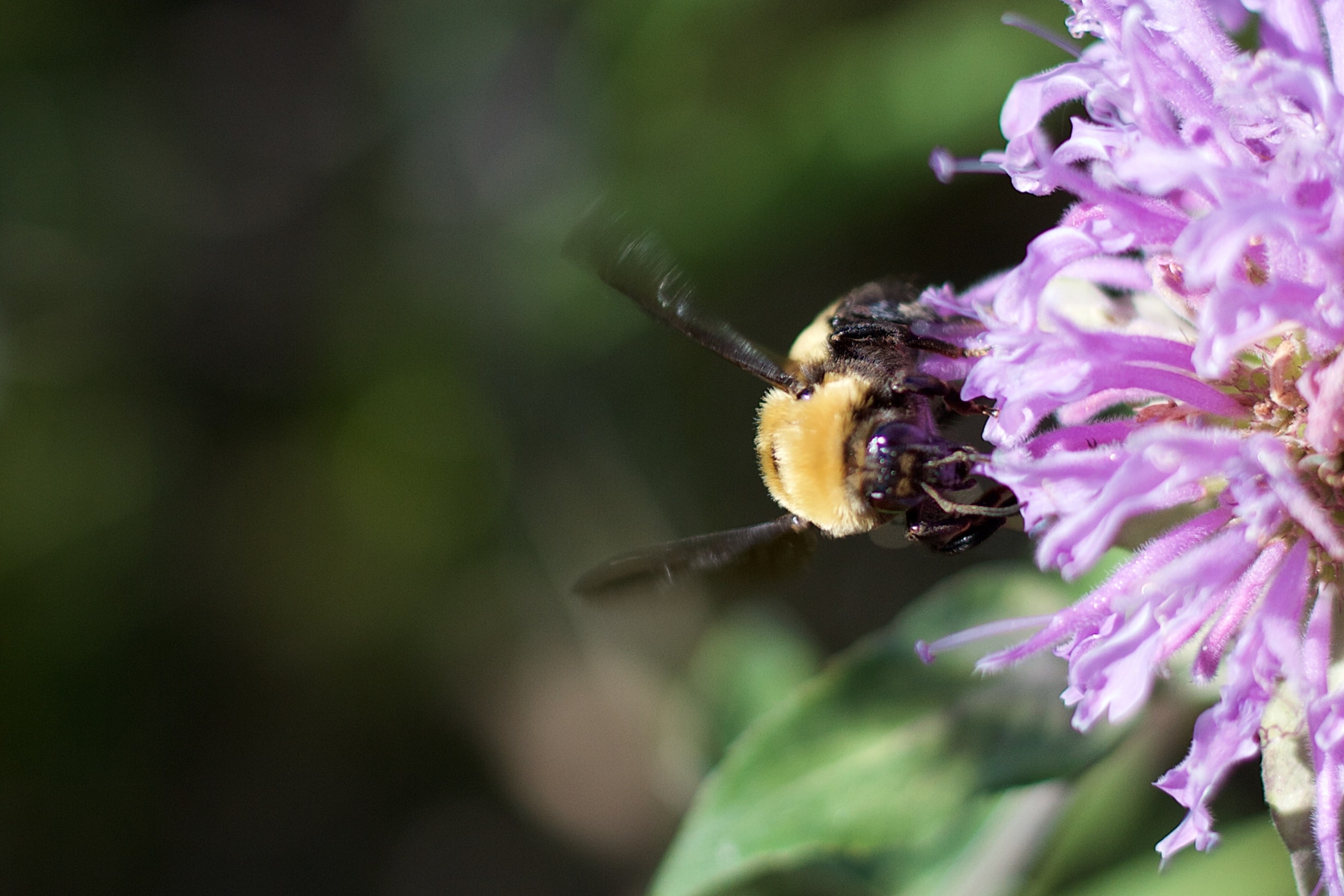
Tell your governor: Support bee-friendly habitat
Safeguard native bees and other pollinators by planting these native plants in your backyard or garden.
Take Action
Are you looking for ways to make your garden or yard more sustainable and pollinator-friendly? Planting carefully selected native wildflowers, grasses and shrubs will help you, local wildlife and the environment.
These plants have evolved in specific regions under particular conditions, so they require less maintenance and naturally offer advantages by creating healthy wildlife habitat, conserving water and reducing the need for pesticides and fertilizers in your garden.
Across the United States, the sight of broad expanses of weekly trimmed lawns and the around-the-clock watering that’s required to keep them green has become a standard of beauty. But many people are opening their eyes to a rich, colorful alternative.
Native landscaping can transform your yard into a diverse pollinator haven that’s filled with flowers, low-maintenance plants, and an endless flutter of butterflies and birds. Learn more about native plants in Oregon and how to begin integrating them into your environment.
Native plants are plants that occur in the region in which they evolved. Plants evolve over geologic time in response to physical and biotic processes characteristic of a region: the climate, soils, timing of rainfall, drought, and frost; and interactions with the other species inhabiting the local community.
Here in Oregon, for example, native plants have adapted to our regional climate — wet winters and dry summers.
Native plants provide the most benefits to the environment, wildlife and native pollinators. Native species — especially pollinators — require native plants, as they’re the best sources of nectar and pollen for bees, butterflies and more.
Monarch butterflies, for example, cannot survive without native milkweed plants. Monarchs exclusively lay eggs on milkweed and it’s the only plant that monarch caterpillars will eat during the early stages of their life.
The diversity of native plant structure — tree cover, ground-hugging plants, vines, shrubs, stalks, tall grasses and more — also provides critical habitat and shelter for native wildlife large and small.
There are more plants native to Oregon than we can list here, but you can start your search by conducting research on which plants are native to wherever you are in the state. Several excellent resources, such as Oregon State University’s Extension Services, Oregon Metro’s Native plants booklet, and the Oregon Native Plant Society, provide valuable information about suitable native plants for your area.
Here are just a few of Oregon’s native shrubs and plants:
Shrubs:
Plants (annuals and perennials):
Once you’ve researched native plants in your area, you can start creating your plan. Converting a space can be a gradual process, allowing you to assess your preferences and needs over time. Some people follow the 80-20 rule, planting 80% native plants and keeping a few non-native (and non-invasive) plants.
Be sure to consider your specific needs when selecting native plants. Location, sunlight, soil type and water availability are crucial factors. You can join local gardening groups to get suggestions from people in your area and to exchange plants with fellow enthusiasts.
Prioritize the removal of aggressive, invasive non-native plants like English ivy, bull thistle and spurge-laurel, which can outcompete native species. Eliminating these plants should be your initial focus, even though it takes years to completely eradicate them. Start by working on one garden bed or a section of your yard while incorporating native plants.
Planting in the fall is the most ideal time, but spring is good too. The closer you get to summer, the more water you’ll need to provide.
Be cautious when purchasing native plants, especially from large stores, as they may advertise plants native to the United States but not specific to Oregon. Research thoroughly and use this native nurseries guide to find nurseries selling native plants in Oregon.
By planting native plants, you help restore native ecosystems and habitats. Now more than ever, our pollinators need us. A quarter of known bee species haven’t been seen since the ’90s.
If their native habitat continues to be paved over and destroyed, pollinator populations will continue to plummet toward extinction.
Together, we can help safeguard native bees and other pollinators by planting native species.
As director of Environment Oregon, Celeste develops and runs campaigns to win real results for Oregon's environment. She has worked on issues ranging from preventing plastic pollution, stopping global warming, defending clean water, and protecting our beautiful places. Celeste's organizing has helped to reduce kids' exposure to lead in drinking water at childcare facilities in Oregon, encourage transportation electrification, ban single-use plastic grocery bags, defend our bedrock environmental laws and more. She is also the author of the children's book, Myrtle the Turtle, empowering kids to prevent plastic pollution. Celeste lives in Portland, Ore., with her husband and two daughters, where they frequently enjoy the bounty of Oregon's natural beauty.
